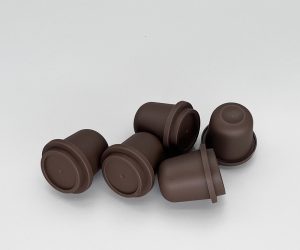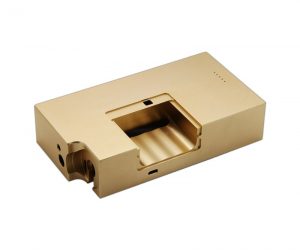Plastic injection molding has become one of the most important manufacturing processes in various industries due to its ability to produce complex, high-precision parts quickly and cost-effectively. Whether it's for the automotive, electronics, medical, consumer goods, or other sectors, plastic injection molding plays a vital role in manufacturing everything from small components to large structural parts. In this comprehensive guide, we will explore the plastic injection molding process, the significance of plastic injection molded parts, the role of injection molding factories, and best practices for ensuring high-quality production.
1. Introduction: The Importance of Plastic Injection Molded Parts
Plastic injection molding factories are the backbone of many industries, providing a reliable and cost-effective method of producing high-quality plastic parts. These factories leverage advanced machinery, precise techniques, and stringent quality controls to deliver functional and aesthetically pleasing parts used in a wide range of applications.
The process allows manufacturers to produce parts that are lightweight, durable, and low-cost, making them ideal for industries that demand high-performance components without compromising on quality or production speed.
In this guide, we will dive deep into the plastic injection molding process, its significance, and how injection molding factories operate to meet industry demands.
2. Understanding Plastic Injection Manufacturing
2.1 The Basics of Plastic Injection Manufacturing
Plastic injection manufacturing is a process that involves injecting molten plastic material into a mold cavity, where it is shaped and cooled to create the desired part. The key characteristics of this process include:
- Material Choices: The most commonly used materials are thermoplastics (which can be melted and reprocessed) and thermosets (which harden permanently).
- Precision and Speed: Injection molding is known for producing parts with high precision and repeatability, making it suitable for high-volume production runs.
- Complex Geometries: Injection molding can produce parts with intricate shapes and complex geometries, something that other manufacturing processes may struggle with.
2.2 Significance of Plastic Injection Manufacturing
Plastic injection molding offers numerous advantages to various industries:
- Cost-Effectiveness: Once the mold is designed and fabricated, the cost per part decreases significantly, especially with large production runs.
- High Repeatability: Parts are produced with tight tolerances and uniformity, ensuring consistency across every unit.
- Design Flexibility: Manufacturers can create parts with varying wall thicknesses, intricate features, and complex shapes.
- Lightweight and Durable: Injection-molded plastic parts are generally lightweight but maintain strength, durability, and resistance to wear.
3. The Injection Molding Process for Plastic Part Manufacturing
Injection molding is a multi-step process. Let’s break it down:
3.1 Step 1: Mold Design and Preparation
The journey starts with mold design:
- Design Considerations: The mold is created based on the desired shape of the plastic part. It is typically made from steel or aluminum and features intricate cavities that match the geometry of the final product.
- Precision: The design needs to ensure that the part can be easily removed from the mold (considering shrinkage, undercuts, and draft angles).
3.2 Step 2: Material Selection and Preparation
Once the mold is ready, the next step is material selection:
- Thermoplastics (e.g., ABS, polypropylene) and thermosets (e.g., Békelite) are chosen based on the part’s specific requirements—strength, flexibility, chemical resistance, etc.
- The plastic pellets are heated and melted in the injection machine before being fed into the mold cavity.
3.3 Step 3: Injection Molding Process
This step is the core of the process:
- Injection: The molten plastic is injected into the mold under high pressure, filling the cavity and taking the shape of the mold.
- Pressure & Temperature Control: This step requires precise control of the temperature, pressure, and injection speed to ensure uniform filling and avoid defects.
3.4 Step 4: Cooling and Ejection
After the cavity is filled, the mold is cooled:
- Cooling: The molten plastic cools and solidifies inside the mold. Cooling time depends on part complexity and material.
- Ejection: After cooling, the mold is opened, and the solidified part is ejected.
The cycle repeats, allowing the injection molding factory to produce large quantities of plastic parts in a short period.
4. Plastic Injection Parts: Enhancing Product Design and Functionality
4.1 Characteristics of Plastic Injection Parts
Plastic injection molded parts are known for their high precision, repeatability, and aesthetic appeal. They can:
- Be produced with tight tolerances, reducing the need for secondary processing.
- Have excellent surface finishes, which is important for both aesthetic and functional components.
- Offer a variety of properties, including strength, lightweight, and corrosion resistance.
4.2 Applications of Plastic Injection Parts
Plastic injection parts are widely used across various industries due to their versatility. Here are some examples of applications:
Automotive Industry:
- Interior Components: Dashboard panels, door panels, center console parts.
- Exterior Components: Bumpers, fenders, grille, mirror housings.
- Lighting: Headlamp lenses, tail lamp housings.
- Engine Components: Air intakes, engine covers.
Electronics & Electrical:
- Connectors: Housing for electrical connectors, switches, control panels.
- Enclosures: Protective housings for electronics.
Medical Devices:
- Syringes & Tubing: Components used in medical procedures.
- Surgical Instruments: Custom-molded components for precision.
- Packaging: Sterilized containers and seals.
Consumer Goods:
- Household Appliances: Components like blender housings, coffee maker parts.
- Toys & Games: Plastic parts for toys and games.
- Packaging: Bottles, containers, and closures.
Industrial Equipment:
- Handles and Grips: For tools and machinery.
- Enclosures: For machinery and control panels.
The broad range of applications demonstrates how plastic injection molded parts have become indispensable to modern manufacturing.
5. The Role of Injection Molding Factories
Injection molding factories are the heart of plastic manufacturing. Here’s how they operate:
5.1 Factory Setup and Equipment
Injection molding factories are equipped with advanced machinery, including:
- Injection Molding Machines: These machines are responsible for injecting the plastic material into the mold under controlled temperature and pressure.
- Robots and Automation: Robots often handle part ejection and post-molding operations like trimming, sorting, and packaging.
- Auxiliary Equipment: This includes devices for material handling, cooling, and monitoring.
- Mold Maintenance: Proper maintenance ensures longevity and accuracy of the molds.
5.2 Quality Assurance and Control
Quality assurance is a critical part of the injection molding process:
- Rigorous Inspections: Every part is inspected for defects like warping, shrinkage, or surface imperfections.
- Testing: Mechanical properties such as tensile strength, impact resistance, and heat resistance are tested.
- Documentation: Production records are maintained to ensure traceability and consistency.
- Real-Time Monitoring: Many factories employ sensors to monitor critical parameters such as temperature, pressure, and injection speed to ensure quality.
6. Conclusion
Plastic injection molding is a powerful and efficient manufacturing process that has revolutionized the production of plastic parts across industries. Injection molding factories are central to this process, offering advanced technology and strict quality control measures to ensure high-quality, functional plastic parts. With the ability to produce complex shapes at a low cost, these parts are essential in various sectors such as automotive, electronics, medical, and consumer goods.
By understanding the plastic injection molding process, the significance of plastic injection parts, and the role of injection molding factories, manufacturers can leverage these capabilities to drive product innovation and meet industry demands.
7. Frequently Asked Questions (FAQs)
7.1 What is plastic injection manufacturing?
Plastic injection manufacturing is the process of creating plastic parts by injecting molten plastic into a mold. Once cooled, the part takes the shape of the mold and is ejected. This process is efficient and ideal for producing high-quality, complex parts with minimal waste.
7.2 What is the injection molding process for plastic part manufacturing?
The injection molding process for plastic parts involves designing the mold, selecting and preparing materials, injecting the material into the mold under high pressure, cooling the material, and ejecting the finished part. It allows for high-precision and high-volume production of complex plastic components.
7.3 What are plastic injection parts?
Plastic injection parts are components made using the injection molding process. These parts are precise, durable, lightweight, and have a wide range of applications across industries such as automotive, electronics, medical, and consumer goods.
With this comprehensive guide, you now have a deeper understanding of plastic injection molded parts and the critical role they play in modern manufacturing across multiple industries. Whether you're looking to enhance your product design or optimize your manufacturing process, plastic injection molding offers a versatile and efficient solution.


